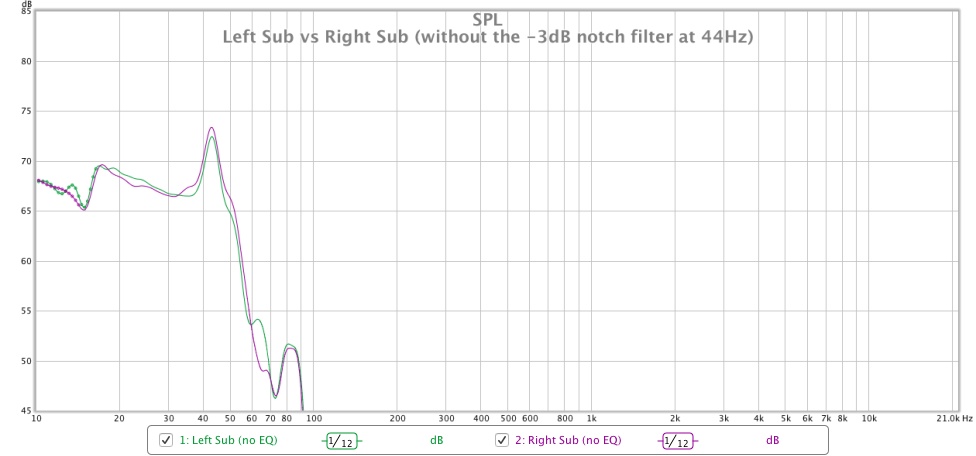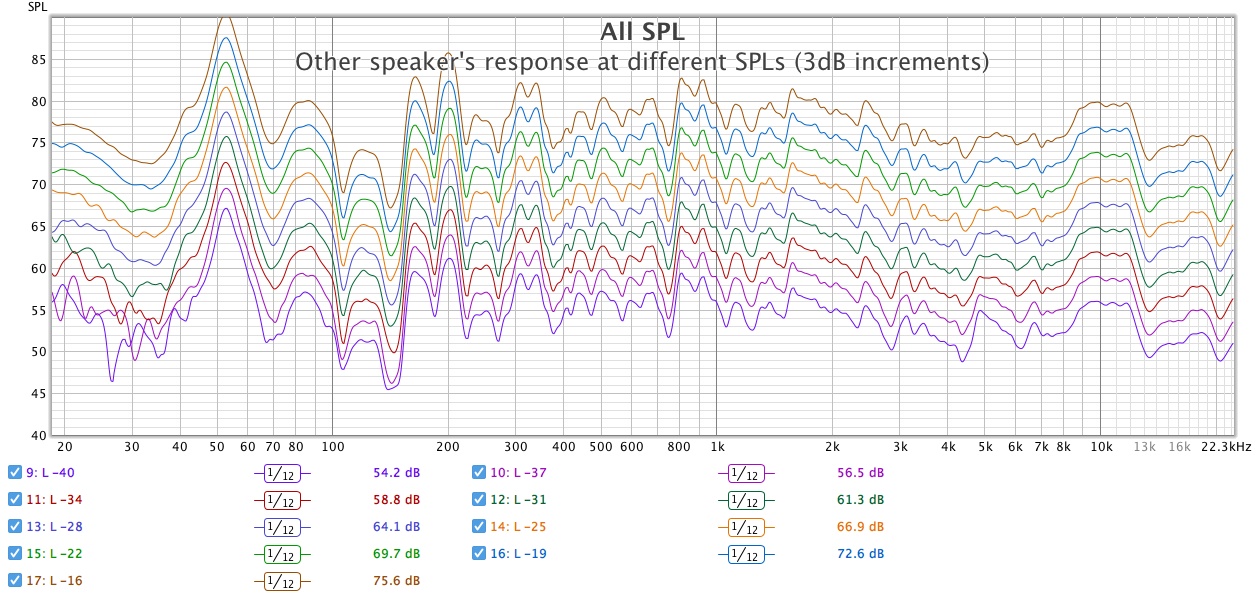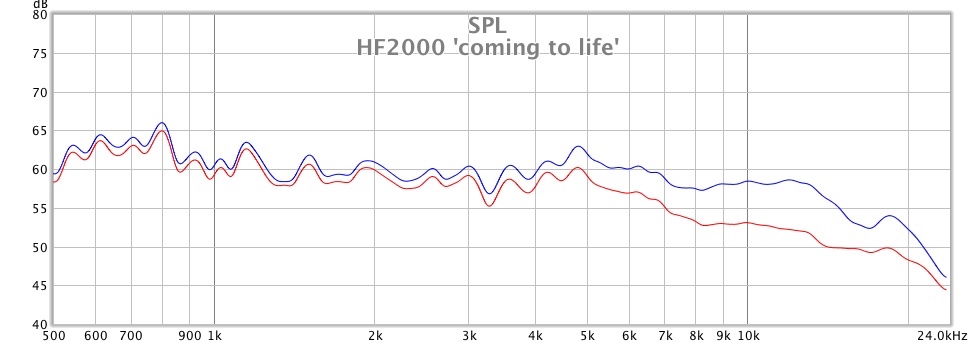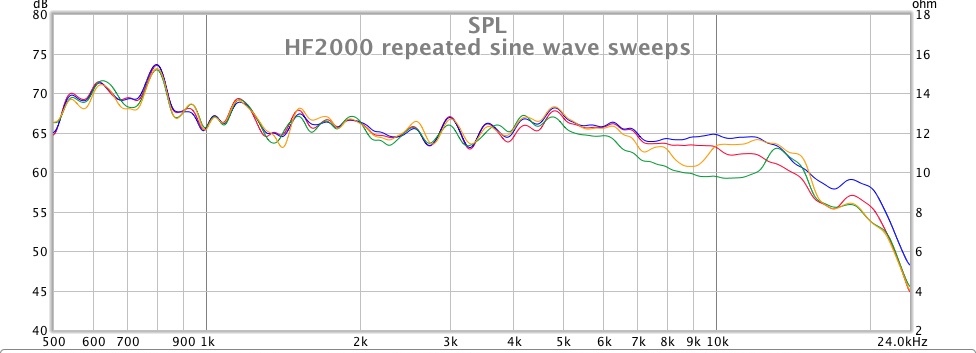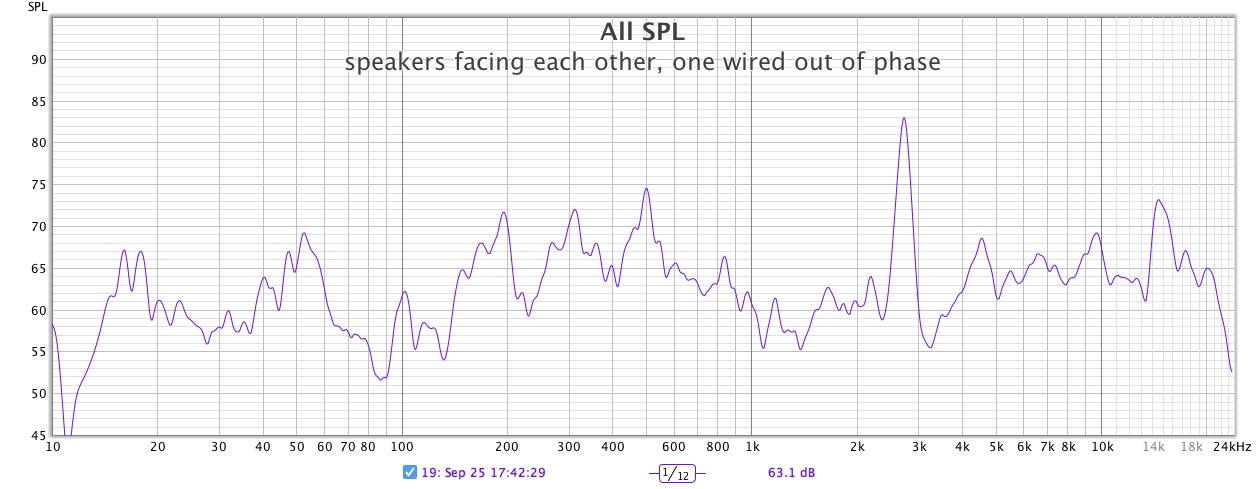ToTo Man
the band not the dog
I've just brought a pair of speakers out from storage, they haven't been played for around nine or ten years. They sounded great when last played but now they don't. The upper third of the frequency response is lumpy and the sound is coloured. This is the how one channel measured after just a few minutes warm-up:
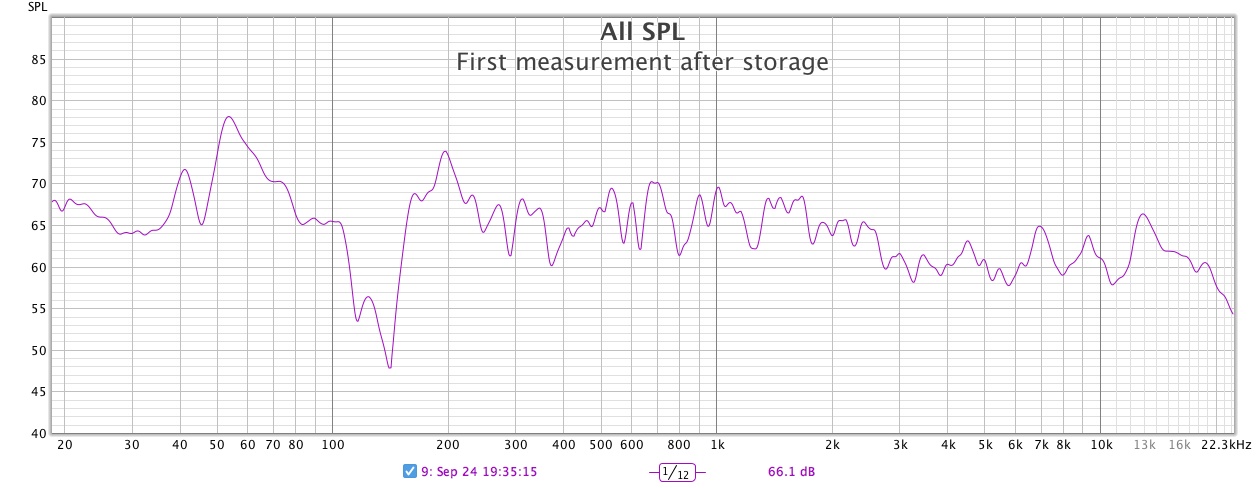
Note the spikes at 7kHz, 9kHz and 13kHz, these begin to smooth out as turn the volume up and get spikier again as I turn the volume back down. Any ideas what would cause this level-dependent behaviour? Tired crossover components? Misbehaving MF and HF level adjustment switches? Driver voice coils sticking in the gap? (None of the drivers use ferrofluid so at least I can rule that out!).
N.B. this is the very first time I've measured these speakers (I didn't have the gear 10 years ago!) so I cannot completely rule out that they exhibited this behaviour before going into storage but I'd like to think my less-well-trained ears would've noticed it...)
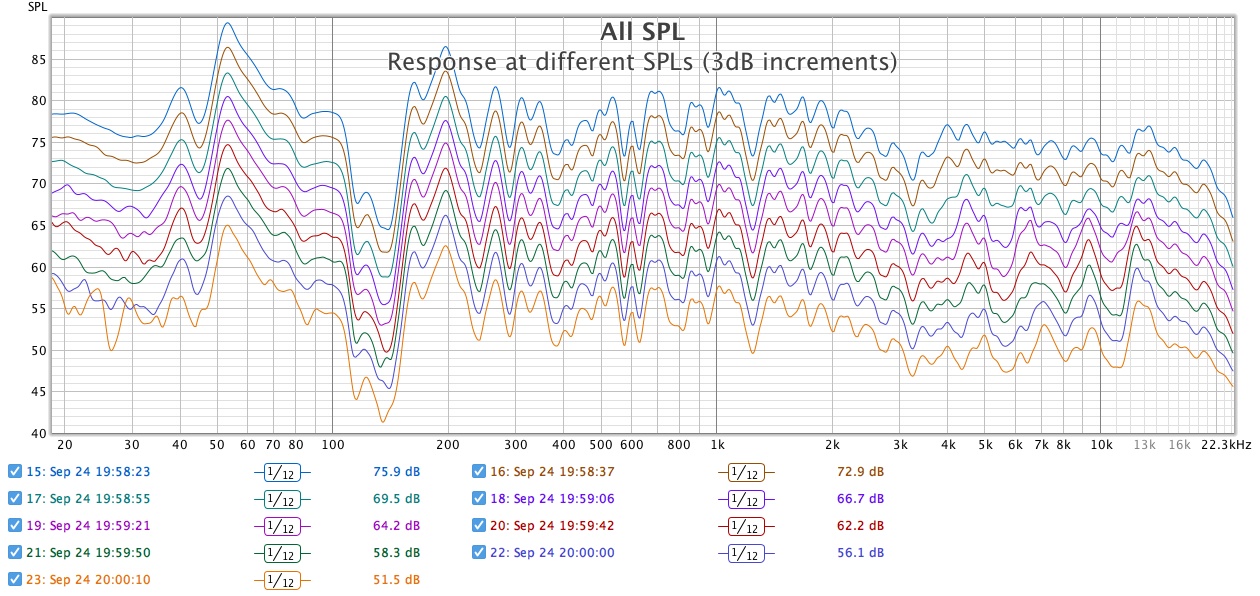

Note the spikes at 7kHz, 9kHz and 13kHz, these begin to smooth out as turn the volume up and get spikier again as I turn the volume back down. Any ideas what would cause this level-dependent behaviour? Tired crossover components? Misbehaving MF and HF level adjustment switches? Driver voice coils sticking in the gap? (None of the drivers use ferrofluid so at least I can rule that out!).
N.B. this is the very first time I've measured these speakers (I didn't have the gear 10 years ago!) so I cannot completely rule out that they exhibited this behaviour before going into storage but I'd like to think my less-well-trained ears would've noticed it...)



